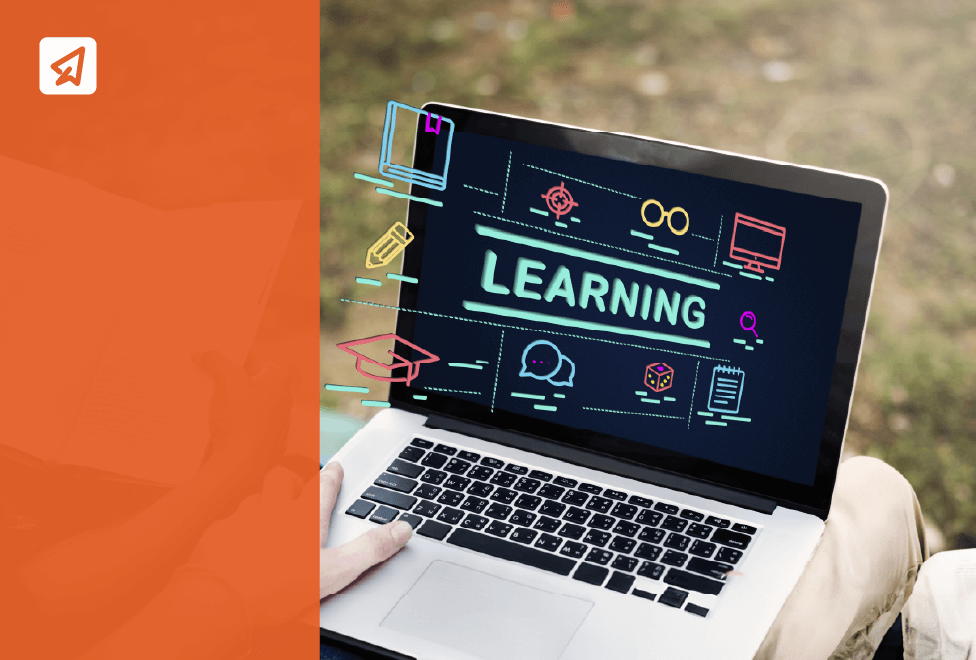NEP 2024-25: Status, Progress, and Expectations

The National Education Policy (NEP), introduced in 2020, brought big changes to India’s education system. It aimed to make learning more skill-based, flexible and focused on students’ overall development. Now, a few years later, it’s worth looking at how far the policy has come and what still needs attention.
Since its launch, the NEP has brought some noticeable changes. Schools are now trying out new ways of teaching, using technology more, and focusing on students’ individual needs. From building strong basics in early grades to encouraging creative thinking in higher classes, the policy has made learning more meaningful for students.
At the same time, there are some challenges that need attention. Many schools, especially in rural areas, face issues like not having enough resources, teachers needing more training, and outdated facilities. While the policy has brought positive changes, it’s important to address these problems to make sure its goals can be fully achieved.
In this blog, we’ll take a look at what’s next for the NEP in 2025. We’ll talk about the changes it’s supposed to bring, how it might make things better, and what it could mean for the future of education in India. Let’s get started!
Objectives of the NEP 2025
The National Education Policy (NEP) 2025 outlines several goals to reshape and enhance education in India. Here’s a closer look at its objectives and how they aim to bring meaningful changes:
-
Improving Educational Quality
A major goal of NEP 2025 is to raise the quality of education at every level. One significant change is the removal of the No Detention Policy. This policy, which was introduced earlier, meant that students were automatically promoted until the 8th grade, no matter their academic performance. The idea was to reduce the pressure on students and help them learn at their own pace. However, over time, it was realised that this approach allowed students to move forward without mastering the basics, which affected their overall learning.
By removing this policy, NEP 2025 aims to make sure that students are actually learning and mastering the important subjects before moving ahead. This change is expected to improve learning outcomes and make education more meaningful for students, ensuring they’re better prepared for higher education or the workforce.
-
Promoting Equity and Inclusion
Another important aspect of the NEP is making education more inclusive and accessible for all children, no matter their background. This includes children from different regions, communities, and socio-economic situations. The goal is to make sure every child has the opportunity to receive a quality education.
The policy is focused on reducing gaps in access to education, whether due to location, gender, or financial constraints. By improving the education system for everyone, the NEP hopes to give all children the same chance to learn and grow, helping to break down barriers that often prevent certain groups from succeeding in school.
-
Support Innovation and Flexible Learning
NEP 2025 encourages schools to try new teaching methods that make learning more flexible for students. The idea is to let students choose paths that suit their interests and strengths while giving teachers room to try fresh ways of teaching. This approach aims to make the learning process more personalised and engaging for everyone.
-
Use Technology to Improve Learning
NEP 2025 highlights how technology can make learning easier and more engaging. Many schools are now using smart classrooms with interactive tools like videos, animations, and presentations. These audio-visual materials help students understand topics better by presenting them in a more engaging way. When combined with regular teaching methods, this approach creates a good balance that supports different ways of learning and improves the overall classroom experience.
-
Update Curriculum and Teaching Methods
Another focus is on revising what students learn and how they’re taught. The goal is to make lessons more enjoyable, less stressful, and easier to relate to real-life situations. This means emphasising practical knowledge and skills that students can use in everyday life, preparing them for their future in a simple and meaningful way.
Learn More about the National Education Policy (NEP) 2020
Explore the comprehensive guide to the National Education Policy 2020. Discover how it is implemented, NEP features, and principles.
Learn MoreCurrent Status of NEP Implementation
-
A Fresh Start for Early Learners
One of the first steps under the NEP has been the creation of the National Curriculum Framework for the Foundational Stage (NCF-FS). This is aimed at children aged 3 to 8 and includes tools like the “Jadui Pitara” learning kit. The focus here is on play-based and activity-driven learning, which helps children develop important skills while keeping them engaged and curious. It moves away from traditional rote learning and makes the learning process more enjoyable and meaningful for young minds.
-
Encouraging Regional Languages
The NEP has made it easier for students to learn in their native languages. Engineering and medical courses are now being offered in regional languages, making higher education more approachable for many. Entrance exams like JEE and NEET have also been made available in 13 regional languages, giving students across different linguistic backgrounds a fairer chance at pursuing their dreams.
-
New Undergraduate Program
Higher education has also seen a major change with the introduction of the Four-Year Undergraduate Program (FYUP). Over 105 universities, including 19 central institutions, have adopted this system. It allows students to have multiple exit options, meaning they can complete a certificate, diploma, or degree based on how long they study. This program offers more flexibility and caters to students with diverse career goals and academic interests.
-
Taking IITs Global
The NEP has also led to Indian Institutes of Technology (IITs) expanding their reach to other countries. For instance, IIT-Madras has opened a campus in Zanzibar, and IIT-Delhi is planning to set up in Abu Dhabi. These international campuses aim to showcase India’s expertise in higher education and give students access to top-notch academic opportunities on a global scale.
-
Adopting Digital Learning
Digital platforms have become an important part of education under the NEP. Initiatives like PM e-VIDYA and DIKSHA make quality resources available to students and teachers through online platforms. These efforts ensure that even students in remote areas can access learning materials, making education more inclusive. The focus on digital learning is helping bridge gaps in accessibility and create new ways of teaching and learning.
-
Adjusted School Timings for Better Sleep
In a positive shift towards prioritising student well-being, the government has changed school timings to help improve students’ sleep patterns. By allowing for better rest, the aim is to enhance cognitive functions and academic performance. This decision reflects India’s ongoing efforts to evolve its education system and ensure that students’ health is given the attention it deserves, creating an environment where learning and well-being go hand in hand.
-
Increased Funding for Literacy and Higher Education
In the year 2024-25, the Indian government made a remarkable commitment to education by allocating Rs 73,498 crore to the Department of School Education and Literacy. This is a 19.56% increase from the previous year, highlighting a strong push to improve educational infrastructure and make learning more accessible to all. Additionally, the Department of Higher Education received Rs 47,619.77 crore, which will fund important initiatives like PM-Vidyalaxmi, APAAR, ONO, PRERNA, and SWAYAM Plus,. These programs show a dual approach: one aimed at empowering students at the grassroots level, and the other working to improve India’s higher education sector to compete globally.
-
One Nation One Subscription (ONOS)
The One Nation One Subscription (ONOS) initiative is designed to make academic journals and articles accessible to students and educators across the country. Scheduled to be implemented between 2025 and 2027, ONOS will receive a generous Rs 6,000 crore over three years. This initiative aims to reduce knowledge gaps and provide equal access to learning resources. However, there are challenges to consider, such as ensuring that rural and regional colleges benefit equally and addressing sustainability concerns. To fully realise its potential, policymakers will need to focus on overcoming these hurdles.
-
Ongoing Challenges in Education
Despite the progress, some challenges still remain. Unequal access to education, regional differences, and a lack of proper infrastructure are ongoing issues. Another big concern is the shortage of trained teachers, especially in rural areas. Without enough qualified teachers, it becomes hard to make real progress. Addressing these problems in a balanced way will be important to keep improving education for everyone.
Challenges and Delays Holding Back NEP
While the National Education Policy (NEP) has made significant strides, there are still several challenges and delays that are slowing down its full implementation:
-
Adapting the 5+3+3+4 Structure
One of the significant hurdles has been aligning school curricula across different states and training teachers to implement the new teaching methods. The shift to this new structure is not immediate, and many regions are still catching up. Additionally, foundational textbooks for some grades have only recently been developed, which has delayed the full implementation of this model.
Read more on 5+3+3+4 Structure here!
-
Single Regulatory Body for Higher Education
The NEP suggests merging regulatory bodies like the UGC, AICTE, and NCTE into one unified body to streamline higher education regulation. However, the legislative changes needed to create this single regulator are still under discussion and have yet to be passed, which slows down the reform process.
-
Lack of Uniforming Monitoring Mechanisms
While efforts are being made to measure the impact of NEP, there isn’t a standard way to track progress across all regions. Without consistent evaluation methods, it’s harder to understand how well the policy is working and what areas need more attention.
Expected Implementations New Education Policy 2025
The National Education Policy (NEP) sets ambitious goals to transform education in India. Here’s what’s expected to be achieved by 2025:
-
Vocational Training for Half of the Students
By 2025, 50% of students are expected to receive vocational training as part of their education. This hands-on exposure will give students practical skills that can prepare them for various careers and build their confidence to take on real-world challenges.
Also Read: How NEP 2020 Promotes Vocational Education?
-
Digital Resources for All
Efforts are underway to expand access to digital learning platforms like DIKSHA and virtual labs, especially in areas that currently lack proper resources. These tools aim to bring quality education to underserved regions, making it easier for students everywhere to benefit from modern teaching methods.
-
Nationwide Teacher Training
To align with NEP’s vision, teacher training programs are being rolled out across the country. By 2025, 80% of teachers are expected to be trained in updated teaching practices and methods. This will help educators create a learning environment that is both engaging and relevant for students.
Also Read: Teacher Education in NEP 2020
-
New Multidisciplinary Institutions
At least 50 districts are set to have new multidisciplinary higher education institutions. These colleges and universities will offer flexible learning options, allowing students to explore a range of subjects and design their educational paths according to their interests and goals.
-
Higher Enrolment in Schools
The NEP also focuses on boosting the Gross Enrolment Ratio (GER) in school education. By 2025, the aim is to move closer to a 100% enrolment rate, ensuring that every child has access to quality education and stays in school through their formative years.
Closing Thoughts
The NEP has made good progress in improving India’s education system, but there’s still work to be done. By tackling the challenges and sticking to its goals, the policy can help create a more inclusive and practical learning environment. Moving forward, it will take teamwork from teachers, policymakers, and communities to make sure every student has the chance to learn and grow in a way that prepares them for the future.
Frequently Asked Questions
-
Has the NEP been successful? What is the government’s view?
The government sees the National Education Policy (NEP) as a joint effort between the Centre and states. Jayant Chaudhary, the Minister of State for Education, shared updates in a recent Lok Sabha session (December 2024). Initiatives like the PM SHRI scheme, which focuses on improving over 14,500 schools, and the NIPUN Bharat mission, aimed at achieving foundational literacy by Grade 2, are part of the progress. Tools like PARAKH are being used to monitor learning outcomes, while platforms like Vidya Samiksha Kendra provide real-time updates on education data. Although some delays exist, the government is working toward full implementation by 2030-40.
-
What are the main changes in school education under NEP 2025?
- New Structure: The 10+2 format is replaced with a 5+3+3+4 model, covering ages 3-18, to focus on overall development and flexible learning.
- Basic Skills: Programs aim to ensure children master basic reading and math skills by Grade 3.
- Simpler Curriculum: The focus is on core concepts and practical knowledge, starting vocational training from Grade 6.
- Updated Assessments: Exams will focus on understanding and skills instead of memorisation, with regular reviews through tools like PARAKH.
-
What changes are coming to higher education under NEP 2025?
- Flexible Learning: Students can mix subjects and exit with certificates, diplomas, or degrees at different stages.
- New Options: Four-year undergraduate programs will include research and entrepreneurship.
- One Regulator: Higher education will be overseen by the Higher Education Commission of India (HECI), covering regulation, funding, accreditation, and standards.
Last Updated on February 14, 2025
Reviewed by

Priya Kapoor | AVP - Academics
Priya Kapoor is an accomplished education professional with over 18 years of experience across diverse fields, including eLearning, digital and print publishing, instructional design, and content strategy. As the AVP – Academics at Extramarks, she leads academic teams in creating tailored educational solutions, ensuring alignment with varied curricula across national and international platforms...read more.









